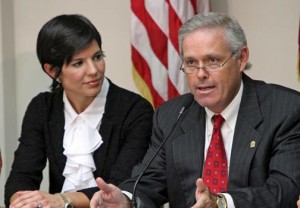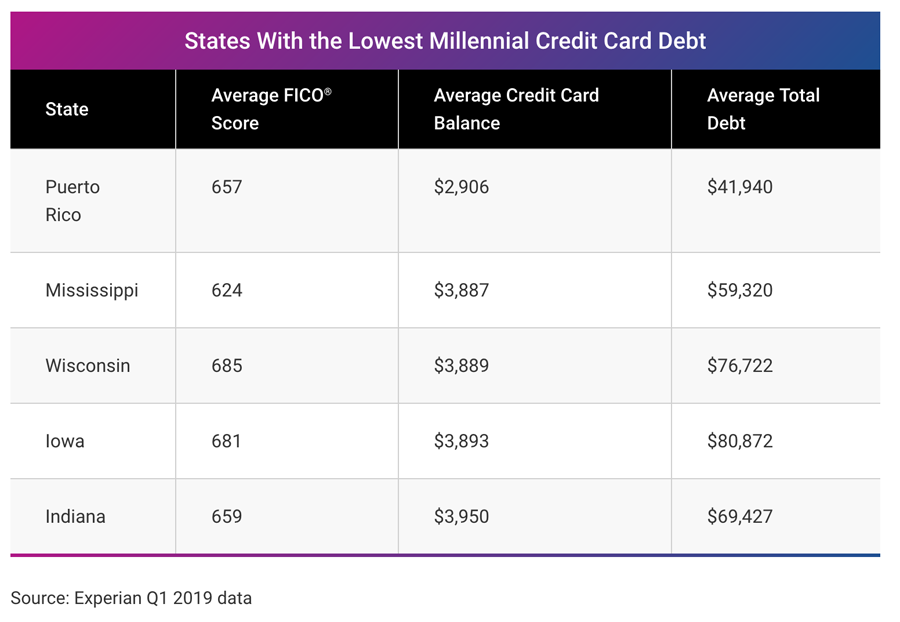Puerto Rico gov’t unveils fixes for Highway Authority finances


From left: La Fortaleza Chief of Staff Ingrid Vila looks on as GDB President Javier Ferrer meet with reporters to disclose remedies for the Highway Authority’s fiscal woes.(Credit: La Fortaleza /Alex Rafael Román)
The Puerto Rico government’s economic team presented four measures to shore up $280 million for the Highway Authority, which is deep in the hole with the Government Development Bank, to which it owes $2.1 billion.
The measures must be approved by the legislature by June 30, or put the Highway Authority at risk of defaulting with the bank, which could open the door to a credit downgrade to “junk” by U.S. ratings agencies.
The package calls for transferring some $29 million from the proposed increase in cigarette taxes, as well as $62 million in vehicle registration collections, from the General Fund into the Highway Authority’s coffers.
Another $189 million is projected to come from an adjustment in excise taxes applied to petroleum by-products from $3 to $9.25, which could potentially increase gasoline prices at the pump by as much as 4 cents per gallon. However, Consumer Affairs Secretary Nery Adames said his agency will be monitoring gasoline prices and would go so far as to cap profit margins if it detected overcharging.
To offset the increase, the government is proposing a 50 percent reduction in diesel fuel, which could represent a drop in transportation costs.
During a news conference at La Fortaleza, Treasury Secretary Melba Acosta and GDB President Javier Ferrer said the proposed measures would result in recurring revenue for the cash-strapped Highway Authority — $189 million in new revenue and $91 million in redirected funds.
“This will allow the Highway Authority to go to market and issue bonds to pay the $2.1 billion debt with the GDB,” Ferrer said. “That will eliminated the threat this poses to the bank’s loan capital and liquidity.”
The Highway Authority’s debt with the GDB has been escalating since 2009, when it owed the $271 million. By December 2012, that number had reached $2.1 billion, a $1.8 billion jump, mostly attributed to the corporations operating expenses. The Highway Authority’s current debt represents 24 percent of the GDB’s total loan portfolio, Ferrer added.
“If we do nothing, the agency would have to paralyze services offered by the Urban Train, the Metropolitan Bus Authority and the ferries to Vieques and Culebra,” Ferrer said. “This would also prompt a downgrade to the GDB’s credit, which would have an effect on the Commonwealth’s credit and other agencies whose finances are tied to that credit standing.”
“The potential effect of that could be similar to what’s happening in Illinois and Detroit: employee lay-offs and cutbacks in government services,” he said.
Meanwhile, Treasury Secretary Melba Acosta said the government’s economic team had mulled over a list of alternatives, all of which would have dealt a severe blow to consumers.
“For obvious reasons, none of those alternatives were acceptable nor reasonable,” she said, mentioning for example, that the government considered increasing tolls by 300 percent and increasing luxury vehicle registrations from $40 to $210.
Moody’s downgrades PREPA credit
La Fortaleza’s announcements came a few hours after Moody’s Investors Service downgraded the ratings of $8.2 billion of the Puerto Rico Electric Power Authority’s Power Revenue Bonds to Baa3 from Baa2.
The rating action concludes the rating review that Moody’s started in December 2012. The outlook is negative, the agency said.
The downgrade reflects the current rating and outlook for the Commonwealth of Puerto Rico’s general obligation bonds (Baa3; negative) as well as the rating of entities that are based on or capped at the GO rating, including the GDB (Baa3; negative), which is an important source of liquidity for PREPA. Moody’s believes that the rating of PREPA is closely tied to the rating of the Commonwealth.
“The rating action also reflects continued weakness in the economy of Puerto Rico, including the lack of economic growth drivers and the negative demographic trends. In addition, the rating action reflects uncertainty about the execution of a long-term fuel diversification and cost reduction plan that is designed to put the Authority on a sounder financial footing,” Moody’s said.
“PREPA also has a sizable Capital Improvement Program, which contemplates the issuance of additional debt and uncertainty remains in terms of its ability to execute a complex construction program,” the ratings agency further noted.
Furthermore, the downgrade reflects credit metrics that have remained weak despite some easing in 2012 as well as weak liquidity. Days cash on hand in 2012 was only slightly higher at 17 days, and PREPAs committed bank lines, which are largely drawn, will need to be renewed at the end of this year.
Moody’s negative outlook reflects those of the Commonwealth and the GDB as well as the liquidity pressures at PREPA that will continue.
“The negative outlook also considers the uncertainty about the execution of the long-term strategic plan to convert high cost oil-based power generation to lower cost natural gas, which will enable PREPA to control rates and help spur economic growth on the island,” Moody’s said.















Fixes or patches. I think good old rubber patches for old tires in the old tradition. They won’t work!